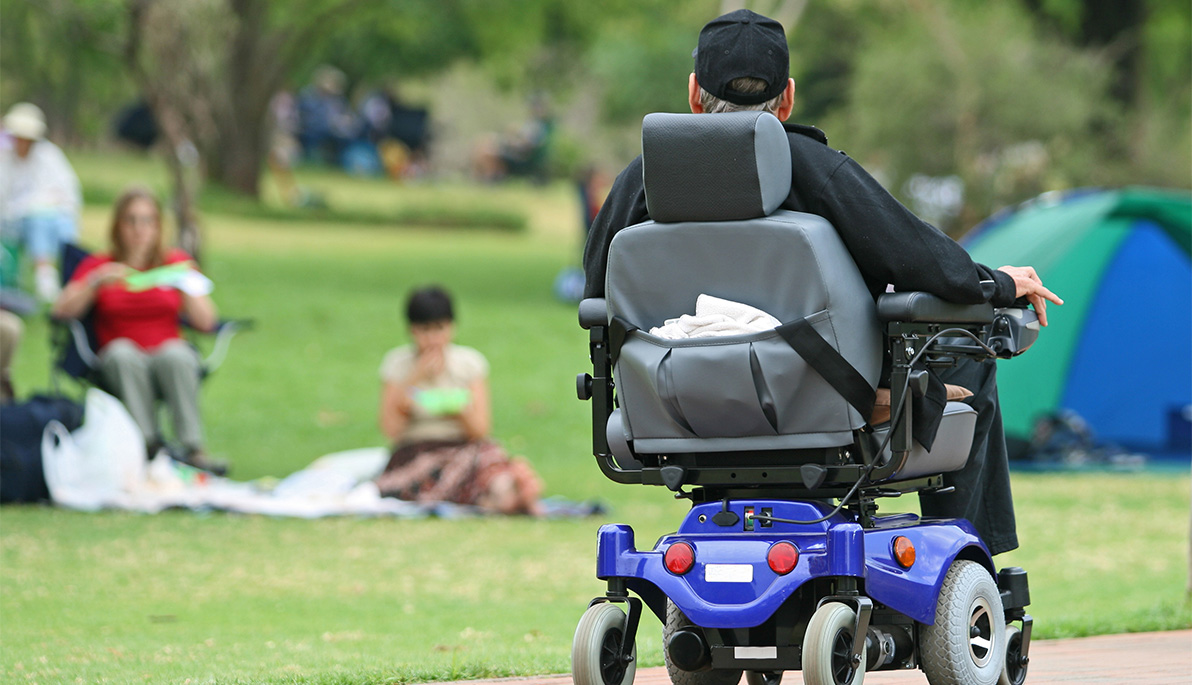News
With Spinal Cord Injuries, Temperature Is Another Complication
February 9, 2018
People with spinal cord injuries (or SCI) can face numerous complications. While paralysis and loss of sensation may be the ones that immediately come to mind, patients can also experience lesser-known issues, such as an inability to regulate body temperature. John Handrakis, D.P.T., Ed.D., N.C.S., professor of physical therapy in NYIT School of Health Professions, studies thermoregulation (the body’s internal thermometer) in persons with SCI.
The hypothalamus, he explains, uses the sympathetic nervous system (SNS) as the primary pathway to increase or decrease insulation. “After a spinal cord injury (SCI), especially after a higher cord lesion (in the neck or upper back), most of the SNS’s connections to its target organs, including blood vessels and sweat glands, can be interrupted. The ability to thermoregulate is impaired,” says Handrakis. This means the body is unable to perform functions most people take for granted, such as sweating to cool down or shivering to warm up (a process termed thermoregulation). “Think of a car,” Handrakis adds. “If the thermostat malfunctions, the car will run too hot and will quickly overheat.” The result is that people with higher levels of injury and more complete SCI are at greater risk for hypo and hyperthermia.
However, measuring thermoregulation in a patient is tricky. Medical professionals use an internationally recognized test (the International Standards for Classification of Spinal Cord Injury—or ISNCSCI) to measure a person’s motor and sensory functions after SCI. However, the current test to measure residual autonomic function (e.g., control of heart rate, blood pressure, sweating, temperature regulation, broncho-pulmonary, bowel, bladder, and sexual function), the International Standards to Document Remaining Autonomic Function after Spinal Cord Injury (ISAFSCI), is not widely accepted. Handrakis aims to change that. “Having an efficient and accurate measure of residual autonomic function post SCI can help in identifying persons who are at risk of suffering from dysregulation in these areas,” he says.
Handrakis and members of the Thermoregulation subcommittee, Autonomic Standards Committee of the American Spinal Injury Association (ASIA), are working to improve the accuracy of the existing screening tool used to identify thermodysregulation, which they hope will then lead to a more universally accepted test.
“We are hoping to improve the ISAFSCI autonomic function exam to be a more accurate and user-friendly measure so clinicians may use it along with the ISNCSCI sensory/motor exam,” Handrakis explains. This will allow healthcare professionals to identify and address clinical care issues more effectively.
In their study, the team recommends people with SCI at risk for thermodysregulation take measures, including:
- Avoiding continuous exposure to ambient temperatures of more than 95°F for more than four hours.
- Hydrating continuously.
- Applying cold compresses or water to the face every 15–20 minutes while in the heat.
- Designating an accessible cool environment prior to heat exposure or intense exercise.
- Immediately find a cooler environment and seek medical attention should they experience dizziness, fatigue, nausea, altered mental status, or other symptoms of heat exhaustion/stroke.
In December 2017, the team’s case study, “Thermodysregulation in persons with spinal cord injury: case series on the use of autonomic standards” was published in Nature’s Spinal Cord Series and Cases. For the study, the group examined three men with different levels of SCI using the current ISAFSCI, and the authors concluded all three persons were “at risk” of thermodysregulation. In each case, they recommended educating the patient about heat exposure to help avoid a potentially dangerous event (see sidebar).
Handrakis says it’s important to remember that SCIs differ widely and that not every person with SCI will experience the same level of risk for this condition. “Just because you have an injury at the level of the neck, doesn’t mean you will suffer the same degree of thermodysregulation as a person with a similar level of injury,” says Handrakis, who also notes that that injuries below the mid-back are less likely to interrupt the entire SNS. “In many cases, if the injury is less complete, you don’t know how much autonomic regulation of organ systems remains.”
By implementing the autonomic standards exam and ensuring it is used consistently, clinicians will be able to quickly identify the risk of dysfunction, advise the patient on the proper course of action, and potentially provide a tool to document recovery of autonomic function—all of which will help the patient better manage their condition and avoid further complications.





